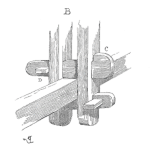
Refer to Article 7 for the expansion joint project. This project had progressed – perhaps beyond lab testing – before it was realized that the design could not meet ASME LRFD criteria. LRFD was considered necessary for reliability. The engineering manager had to consider a redesign.
Missing the LRFD may be the result of not conducting a design failure modes and effects analysis (dFMEA). FMEA is a risk discovery process. Discovering design risks early in the project improves reliability and increases profitability by avoiding redesign and schedule delays.
A “check the box” dFMEA (CTB) may also explain the miss. A CTB FMEA is usually completed only to achieve the appearance of due diligence. A CTB FMEA delivers little value because typically:
- One project member completes the entire FMEA template.
- Controls reflect tribal knowledge, not documented practices.
- Initial and final RPNs are all low risk (it’s a perfect product!).
- There are few recommended actions.
- The recommended actions are vague and un-auditable.
- The template is submitted at the end of the project.
To realize value, FMEA must be conducted correctly. Here are some key elements of a value generating FMEA program:
- FMEA program documents exist to promote consistency.
- A senior design SME provides FMEA program oversight.
- A group of SMEs are trained to facilitate FMEAs.
- FMEA requirements are modified for high TRLs.
- FMEA is conducted with small teams of SMEs (4 to 8) who can anticipate design risks.
- dFMEA is conducted by the end of design; pFMEA is conducted by the end of lab test.
- A document workflow exists for approval and implementation of recommended actions.
- Metrics exist for measuring the effectiveness of the FMEA program.
Reduce design risk as much as possible using an FMEA program. And remember that a sustained focus on FMEA is a trait of an organizational culture that values high reliability.
TRUTH: When conducted correctly, an FMEA delivers savings to the bottom line.
This is the 9th in a series of 10 articles on critical equipment design for offshore completions.
Leave a Reply